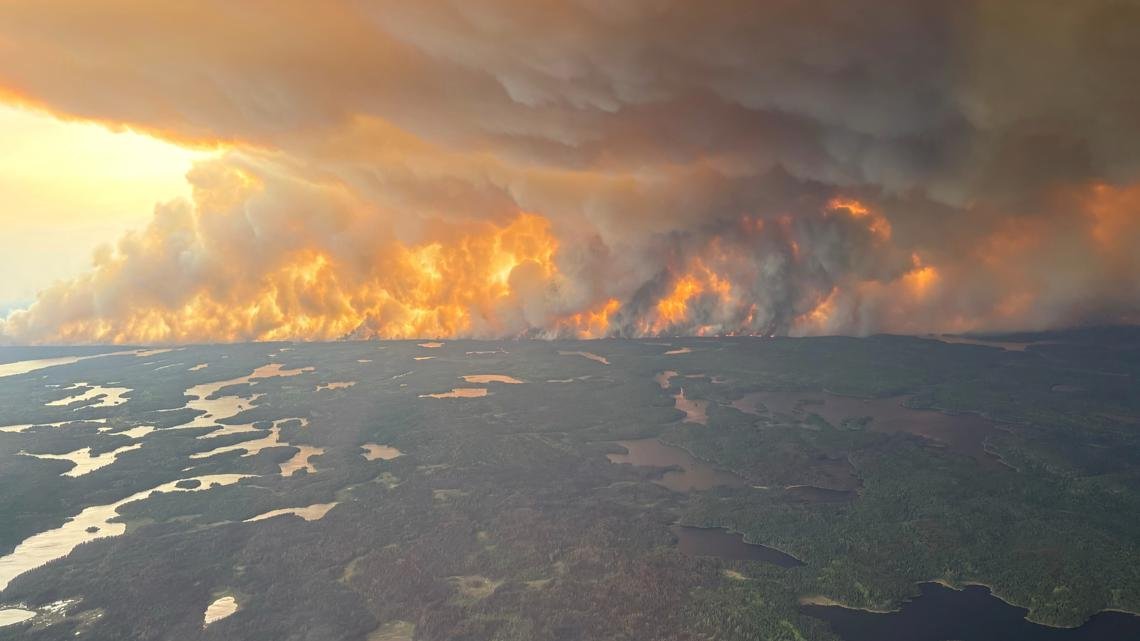Business
Winds Carry Canadian Wildfire Smoke South, Deteriorating U.S. Air Quality

Wildfires in Manitoba, Canada, are significantly affecting air quality across parts of the United States. Nearly two dozen fires are currently raging in the province, situated north of Minnesota and North Dakota.
As winds carry smoke southward, areas in Minnesota and Wisconsin are experiencing unhealthy air quality levels. The Environmental Protection Agency’s AirNow page indicates that the air quality is particularly hazardous for those sensitive to pollution.
Friday afternoon’s interactive air quality map showed a stretch of orange—a color signifying unhealthy air—across Wisconsin. Most of Wisconsin and Michigan’s Upper Peninsula reported moderate air quality, with similar conditions in eastern Iowa and northwestern Illinois.
According to meteorologist Patrick Ayd with the National Weather Service, particulates from the wildfires could extend further south to Oklahoma, Tennessee, and Arkansas in the coming days.
Local business owner Murray Kinsey described the situation as “hazy” near Birch Lake, Minnesota. Despite breathing difficulties, he noted that fishing activities continued.
Since the beginning of the year, Manitoba has reported over 100 wildfires. The situation escalated this week, prompting the province to declare a state of emergency and leading to the evacuation of approximately 17,000 residents.
Canada’s wildfire season runs from May to September, with 2023 marking one of the most severe years on record. The smoke has blanketed large portions of North America, raising health concerns.
Kevin Doom, also a meteorologist with the National Weather Service, confirmed that strong upper-level winds are facilitating the smoke’s movement southward. He noted that the haze spreads but will gradually disperse into the atmosphere.
The Air Quality Index (AQI) is crucial for understanding air pollution levels and their health implications. Ranging from satisfactory (green) to hazardous (maroon), the AQI provides guidelines for those who may be affected by pollution.
Friday’s readings indicated an AQI in the orange zone around northeastern Minnesota, highlighting risks for vulnerable populations such as the elderly and children. Authorities advised limiting outdoor activities.
Weather forecasts also predict potential thunderstorms in the Chicago area, which may interact with the smoke, affecting air quality. Fine particle levels are projected to reach unsafe levels in northern Minnesota, prompting advisories for residents to minimize outdoor activities.
In light of this event, experts recommend that individuals stay indoors with windows closed, avoid strenuous outdoor activities, and refrain from burning wood or using outdoor fans.
Last summer’s wildfires in various U.S. states and Canada similarly impacted air quality, leading to various health advisories. The ongoing situation underscores the need for awareness and precaution as wildfire season progresses.
Williams reported from Detroit; Raza from Sioux Falls, South Dakota.


















